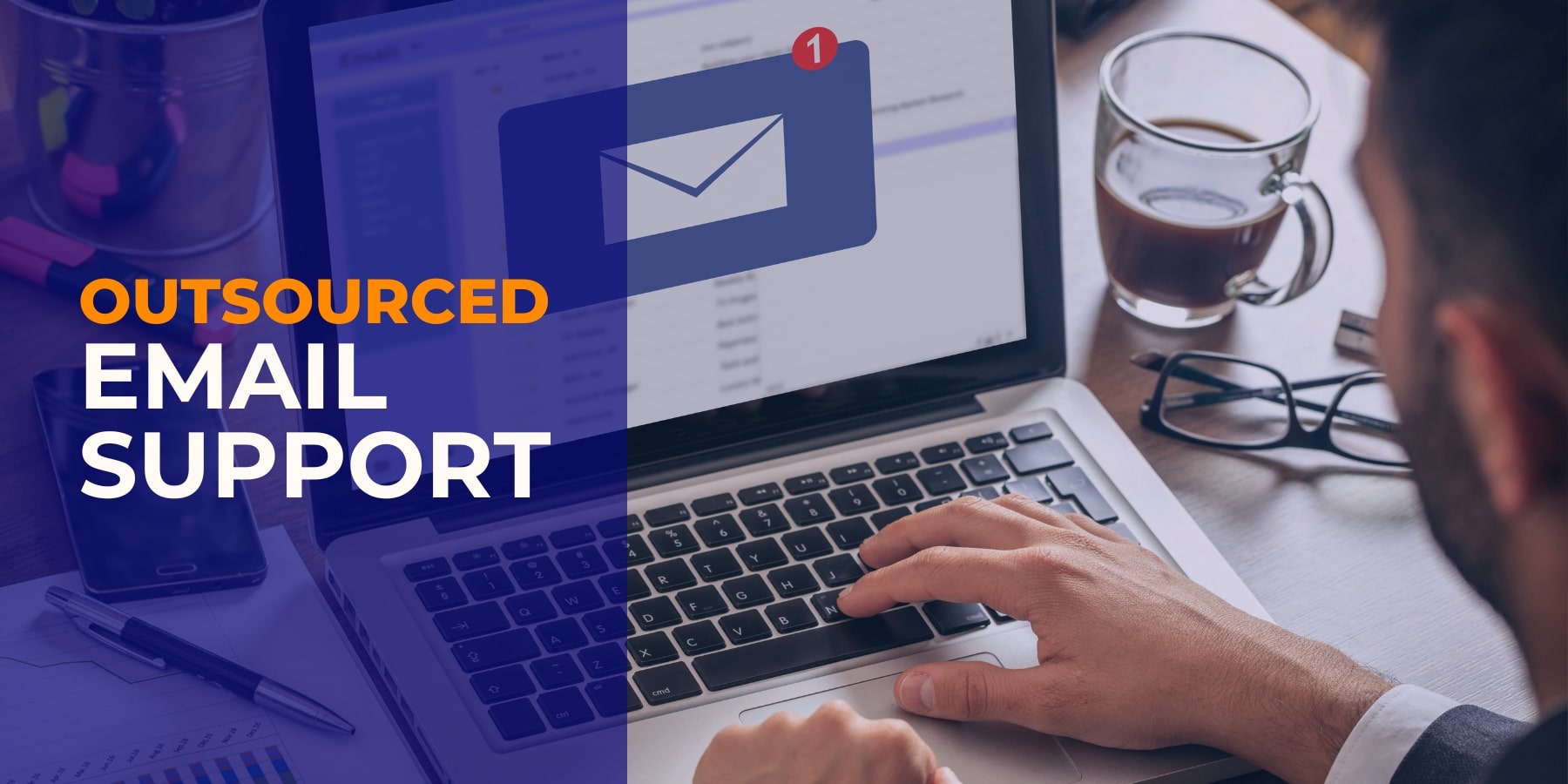
Do you need help managing customer service inquiries via email? Trying to keep up with emails from an ever-growing list of customers takes time and effort.
According to Statista’s forecast, the number of global email users was estimated to be 4.3 billion in 2022. This number is expected to increase to 4.6 billion by 2025, accounting for more than half of the projected world population. Therefore, responding to emails requires time and energy, which can sometimes be a tiring job. That’s why you must be able to stay on top of your email inbox whenever customers need help, no matter how basic or advanced their questions may be.
Fortunately, some strategies go beyond the basics that help you make short work of customer inquiries while providing optimal customer service. In this article, we’ll look at some advanced tips and tricks that offer helpful examples of email support services strategies.
Personalization
Personalization is a crucial aspect of email for support that can help to enhance customer satisfaction and loyalty. It involves tailoring email support messages to meet customers’ needs and preferences. Here are some points to consider regarding personalization in email support outsourcing services:
- Personalization can create a more personalized customer experience and show customers you value their business.
- Personalization can help build customer trust and rapport, showing that you understand their needs and concerns.
- Personalized messages can also improve customer engagement, as customers are more likely to read and respond to relevant and meaningful notices.
Techniques for personalizing email support services:
- Use the customer’s name and address them personally in the email.
- Use customer data such as past purchases, browsing history, or previous interactions to tailor the email content to their interests or concerns.
- Customize the tone and style of the email to match the customer’s communication preferences.
- Offer personalized recommendations or solutions based on the customer’s specific needs.
Automation
Email automation uses technology to handle various aspects of email support outsourcing services without human intervention. Here are some points to consider:
Benefits of Automation in Email Support:
- Saves time and improves efficiency: Automation can help save time by automatically performing repetitive tasks such as sending standard replies, sorting emails, and forwarding messages to the correct department or agent.
- Increases consistency: Automation ensures that all customer inquiries receive the same level of attention, resulting in consistent responses that help build trust and credibility.
- Enables personalization at scale: Automation can help personalize emails using customer data and behavior to send targeted and relevant messages.
- Improves customer satisfaction: Automation can help ensure that customer inquiries are addressed promptly and accurately, leading to higher customer satisfaction rates.
Ways to Implement Automation in Email Support:
- Chatbots and virtual assistants: Chatbots and virtual assistants can automate simple customer inquiries and provide quick solutions without human intervention.
- Canned responses: Canned responses are pre-written replies to common customer inquiries that can be easily accessed and sent with just a few clicks.
- Email filtering: Email filters can automatically sort incoming messages based on specific criteria, such as the sender’s email address, subject line, or keywords.
- Auto-responders: Auto-responders are automated emails sent to customers immediately after submitting a support request. These emails can confirm receipt of the request, provide an estimated resolution time, and offer additional information or resources.
Email analytics: Email analytics can be used to analyze customer behavior and preferences, allowing for the creation of targeted and personalized emails that are sent automatically.
Multichannel support
Multichannel support refers to providing customer service through different channels such as email, phone, chat, social media, and more. Here are some points about the importance of multichannel support and examples of effective strategies:
Explanation of the importance of multichannel support:
- Customers have different preferences regarding communication channels, and by offering multiple options, you increase the chances of meeting their needs and expectations.
- Providing multichannel support can improve the customer experience by making it easier and more convenient for them to reach out for help and resolve their issues quickly.
- Multichannel support can also help businesses reach a wider audience and expand their customer base by catering to customers who prefer different communication channels.
Effective multichannel support strategies:
- Offering a self-service portal where customers can find answers to questions or troubleshoot issues independently.
- Implementing a live chat system on your website to provide instant support and reduce response times.
- Having a dedicated support team for social media platforms like Twitter and Facebook to handle customer inquiries and complaints.
- Providing a phone support option for customers who prefer speaking to a live agent or have complex issues that require more attention.
- Creating a knowledge base or FAQ section on your website to address common questions and concerns.
- Using omnichannel support tools that integrate multiple communication channels into one platform allows agents to handle inquiries from different media in one place.
Escalation Procedures
Email support outsourcing teams need effective escalation procedures to handle complex issues appropriately and quickly. Escalation procedures help streamline the issue resolution process and provide customers with a clear path to resolving their problems.
Importance of escalation procedures:
- Ensures that issues are addressed promptly and by the appropriate personnel, which leads to faster resolution times and better customer satisfaction.
- Helps identify systemic and recurring problems requiring more in-depth analysis and resolution.
- Helps prevent issues from getting out of control and causing significant harm to the customer or the business.
Techniques for developing effective escalation procedures:
- Identify the issues that need to be escalated: Email support services agents need to develop a list of topics that require escalation and determine the criteria for escalation.
- Define the escalation process: The email for support agents should develop a straightforward escalation process that outlines the steps involved in escalating an issue, including who needs to be involved, how to notify them, and what information needs to be provided.
- Establish timelines: The outsourcing mailing services team must establish clear timelines for each stage of the escalation process to ensure that issues are resolved promptly.
- Train support staff: Support staff needs to be trained on the escalation process, including identifying issues that require escalation, the steps involved, and how to communicate effectively with customers during the escalation process.
Data Analysis
Data analysis is an essential component of email support services. Organizations can gain insights into customer behavior, preferences, and trends that can help them improve their email support services and provide a better customer experience. Here are some points that explain the importance of data analysis in email for support, techniques for analyzing data, and examples of effective use of data analysis in email support:
- Understanding customer behavior: Data analysis can help organizations understand customer behavior, such as how they interact with support emails, the issues they raise, and their satisfaction levels.
- Improving response times: Analyzing data can help organizations identify areas where they can improve response times, such as automating common responses or improving routing to suitable agents.
- Improving customer satisfaction: Organizations can identify areas for improvement in their email support outsourcing services, resulting in increased customer satisfaction.
- Identifying trends: Data analysis can help organizations identify trends in customer queries, such as recurring issues, which can help them take proactive measures to address them.
Techniques for analyzing data in email support services:
- Sentiment analysis: This involves analyzing the language and tone of customer emails to determine their overall sentiment towards the support experience.
- Text mining: Text mining involves analyzing the content of customer emails to identify patterns and trends.
- Categorization: Categorization involves classifying customer emails based on their content, such as the type of issue or the customer’s location.
- Network analysis: Network analysis involves analyzing the interactions between customers and support agents to identify patterns and trends in communication.
Conclusion
Providing advanced email support services is essential for businesses that want to deliver exceptional customer service. Personalization, automation, and multichannel support are some strategies companies can use to take their email support to the next level. Personalization involves tailoring emails to meet individual customers’ unique needs and preferences. At the same time, automation uses technology to handle various aspects of email support without human intervention.
Multichannel support offers customer service through different channels, such as email, phone, chat, and social media, to cater to customers’ diverse communication preferences. Implementing these strategies can help businesses provide efficient and effective email support while building customer loyalty and satisfaction.








